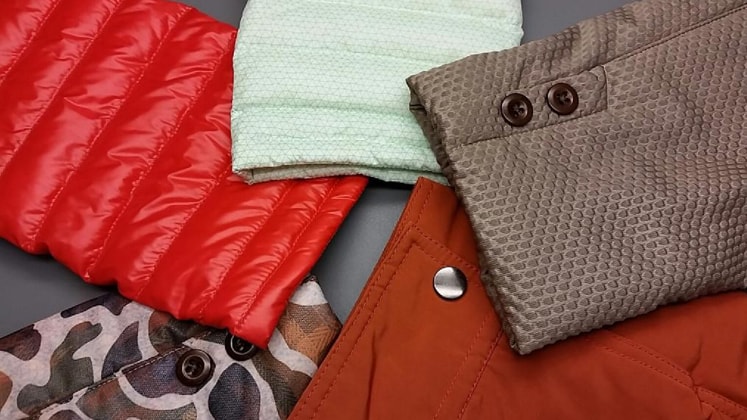
Gone are the days when garment manufacturing industry could rely on traditional approach. Fashion trends are changing rapidly, buyers are squeezing margins, labour cost is increasing with each passing year and order quantities are getting shorter with multiple designs. China, a powerhouse in apparel manufacturing with more than US $ 150 billion worth of annual exports, already sensed the need for transforming its manufacturing as the country felt the heat of changing fashion retail dynamics before any other country could even realise it.
Vincent Djen, Director, Cheng Kung Garments, talks to Apparel Resources exclusively about transforming manufacturing business both for his company and the country. Vincent has formalised a broader strategy for his company to use resources to alter and create comparative advantages for his business on a global scale.
AR: What is Cheng Kung Garments all about and what are you responsible for in this business?
Vincent: Cheng Kung Garments was started by my parents in 1975 in Hong Kong. At that time, it was a small factory which produced parts of a jacket for bigger factories and then we slowly evolved into a complete CMT garment factory in the late ’70s and started producing for Scandinavian market in the early ’80s. In the early ’90s, we started a factory in Shenzhen city and later in the same decade, we opened a sourcing office in Shanghai. The company is now being run by my mother, my older brother and myself. I am taking care of our Shanghai office which has become the main office for sourcing, sample making, fabric procurement and product development, as well as pattern making and 3D design.
AR: Please throw light on the overall infrastructure of Cheng Kung Garments.
Vincent: Our company is a Sedex-certified factory which can produce around 2,00,000 pieces of outerwear monthly such as padded or down jackets, parkas, quilted jackets, coats, casual blazers and pants for men and women as well as teenage segment. Our factory also works together with the subcontract CMT factories, that we have many years of working relationship with, in the Jiangsu and Zhejiang provinces. We are using technology wherever necessary. As we do padded and down jackets, we use all latest template sewing machines provided by the Chinese sewing brand JUITA which is one of the best in its segment.
Personally, I’m quite curios about learning new things like researching on new materials, technologies, sustainability and branding because I have educational background and work experience in electronics as well as marketing strategies. As a result, Cheng Kung as an organisation has started working more towards providing sustainable products and processes for our clients. Today we are a member of the Sustainable Apparel Coalition (SAC), the China Association of Circular Economy, and the Alliance for Waste Textiles Comprehensive Utilisation Industry. I’m also quite active in the fashion start-up area and now I’m also the co-founder of a Shanghai-based trash-to-product recycling solution start-up called REMAKEHUB. So our company Cheng Kung’s knowledge, network, and research capability is above the spinning level.
AR: How do you think garment manufacturing industry has shaped the landscape in China over the years? And, what is the role that technology plays to help grow the Chinese RMG industry?
Vincent: China’s garment manufacturing industry we know today really took off from the’80s and became a world market-share leader. I think it became the world leader because of key factors like Government promotion, the depth and width of the entire textile supply chain, the strong infrastructure that we have, and a massive consumer market for ready-made garments. As China’s cost of manufacturing is increasing and young factory workers are difficult to find, the industry has really started investing in technology in recent years. Continuous improvement in template sewing machines, robotic sewing and 3D knitting etc., are there to help reduce the dependence on skilled workers. The massive apparel retail market, especially that of the ready-made garment e-commerce companies, is pushing the factories into being more flexible in order size as well as have shorter lead times. The apparel e-commerce sector has also given birth to start-ups doing virtual try-on, 3D body measurement scanning, 3D rendering, etc. With industry-wide sustainability movement, it has fueled a growing number of start-ups and companies providing sustainable yarns, fabrics, dyeing technologies, buttons and trimmings – all by using technology.
AR: The recent years have witnessed a slowdown in apparel business due to shut down of retail stores as well as changing consumers’ preferences. What’s your take?
Vincent: It definitely has an impact on our businesses. Brands’ lifecycle has become shorter and more unpredictable. Order size has become smaller, more European brands are using railroad for shipping instead of cargo ships because it cuts the time by more than half, so we just have to be flexible and adapt to the new normal in the apparel market. Evolution of other Asian countries in garment manufacturing is also increasing competition; however China is different from growth in other Asian counterparts like India, Vietnam, Bangladesh, Indonesia in terms of China’s scale of manufacturing as well as when it comes to the domestic market size, we have a great demand for all season items right from T-shirts and shorts to heavy winter down jackets.
AR: How do you see the role of ‘Industry 4.0’ concepts in your manufacturing process? Even the Chinese Government is focusing on smart factory concept under its ‘Made in China’ theme. What’s your take?
Vincent: Frankly speaking, we haven’t started doing much of Industry 4.0 concept yet, as I think so far I’m seeing more of this concept being used in industries like automobiles than the garment industry. Most of the garment making procedures are still done manually using workforce. There is also a lot of friction in the information flowing from the retail floor to the factory floor and the digitisation of factory floor is still in the early phase.
Currently, Industry 4.0 concept is mostly feasible for products like polo shirts, T-shirts, hoodies and suiting. I have seen factories that have their own web front-end for customers to customise T-shirts or football team jersey design and the factory will produce accordingly as they use digital printer to print the printed fabric and then use laser cutting to cut fabrics for sewing. It’s not really industry 4.0 because the system is not connected end-to-end and the sewing is still done by manual labour. So the speed of the production is constrained by the workers. For example, you have sewing machines that have Wi-Fi capability but what about the cutting and final processing such as steaming and attaching buttons etc.? These processes are not yet digitised. The digitisation of weaving and dyeing process has gained some popularity but the information is now transmitting downstream.

The essence of Industry 4.0 is from retail floor or web floor to the factory floor with data seamlessly flowing through and right now is still fragmented. So, I will say we are at the early stage of industry 4.0 and I think the concept will take off when we see robotics are being widely used in the industry.
AR: Small MOQ is a challenge for manufacturers today. Are you also facing such challenges?
Vincent: Cheng Kung is able to manufacture even smallest of MOQ (300-500 pieces per style) and can still remain profitable. It’s just that we need to study extensively about fabric utilisation for down jackets and other outerwear that we produce in order to save maximum cost as fabric constitutes around 60 per cent of overall cost of a garment. Our fabric procurement is precise and that’s our key strength. We work directly with spinners, weavers and knitters to develop those kind of fabrics that the market usually doesn’t have. Most of these fabrics are based on sustainable materials as there is a big demand for garments made out of these fabrics especially in EU which is our main market. As I know, volume orders are not an issue when it comes to USA, so our next target is to penetrate the US apparel market as well.
Secondly, the co-operation between departments in a factory should be strong to see profitability in whatever MOQ order it is. IE, production managers, line managers and top management must trust the process of respective division and until that happens, it is difficult to fully unleash the potentiality of resources. This is again an area where we have a stronghold at.
AR: 2020 started on negative growth as Coronavirus has made dents in global sourcing operations. How is the situation in China now? What are the future prospects for the Chinese apparel manufacturing industry?
Vincent: Coronavirus is really unfortunate. Potentially, there is a negative impact on export orders for China to be moved to other countries. Garment is just one of the parts of manufacturing and supply chain process and the other part is raw material sourcing in which China holds dominance. If this is the scenario, then you are kind of stuck unless the yarns you use in your fabrics come from other countries. So, for clothing brands, it is supply chain revamp process. I think the bigger concern is if the confirmed cases of the virus increase rapidly in countries where the buyers may have more negative impact, it will drastically slow down the apparel retail supply chain.
I think the future of apparel manufacturing industry in China will be talked about on concepts like robotics, speed, productivity and transparency. It will continue to evolve and it will also have positive impact on neighbouring Asian apparel manufacturing countries.






